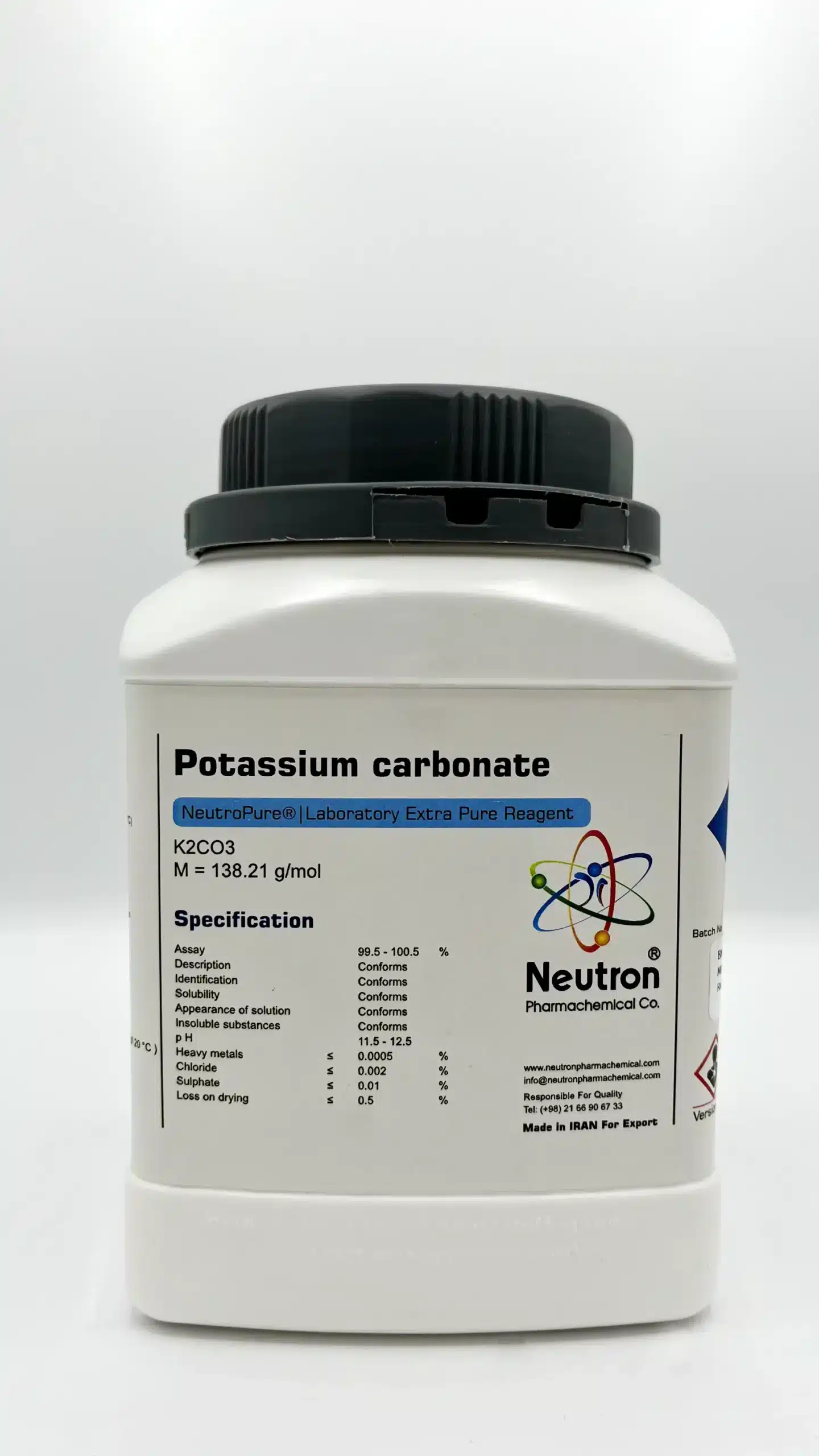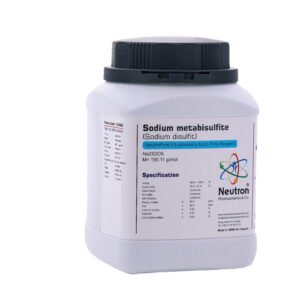پتاسیم کربنات
| Formula | CK2O3 |
| Chemical formula | K2CO3 |
| Density | 2.43 g/cm3 (20 °C) |
| Molar mass | 138.21 g/mol |
| Bulk density | ~ 750 kg/m3 |
| CAS number | 584-08-7 |
| HS Code | 28364000 |
| EC number | 209-529-3 |
| Storage | Without limitation |
| SDS | available |
| RTECS | TS7750000 |
| R phrase | R 36/37/38 |
| S phrase | S 22-26 |
| Odour | odourless |
| Form | solid |
| Color | white |
| p H | ~ 11.5 – 12.5(50g/l 20 °C ) |
| Solubility in water | 1120 g/l (20 °C) |
| Solubility in ethanol | almost insoluble |
| Melting point | 891 °C |
| Assay | 99.5 – 100.5 | % | |
| Description | Conforms | ||
| Identification | Conforms | ||
| Solubility | Conforms | ||
| Appearance of solution | Conforms | ||
| Insoluble substances | Conforms | ||
| p H | 11.5 – 12.5 | ||
| Heavy metals | ≤ | 0/0005 | % |
| Chloride | ≤ | 0/002 | % |
| Sulphate | ≤ | 0/01 | % |
| Loss on drying | ≤ | 0/5 | % |
Potassium carbonate is an inorganic compound with the chemical formula K₂CO₃. It appears as a white, water-soluble salt and is commonly used in the manufacture of glass, soaps, and as a drying agent in laboratories and industry.
🏭⚗️ Production
Potassium carbonate is typically produced by reacting potassium hydroxide (KOH) with carbon dioxide (CO₂). Historically, it was obtained by leaching wood ashes and evaporating the solution, a process that produced what was known as “potash.”
🔬 Properties
Potassium carbonate is a white, odorless, hygroscopic solid. It is highly soluble in water, forming a strongly alkaline solution (pH ~11.5). It is insoluble in alcohol and decomposes upon strong heating. It readily absorbs moisture and carbon dioxide from the air, which is why it must be stored in airtight containers.
🧪 Applications
• Glass manufacturing: Used in specialty glasses, such as optical or heat-resistant glass.
• Soap and detergent production: Acts as a softening and pH-adjusting agent.
• Food industry: Used as a food additive (E501) for pH control, especially in German pretzels and ramen noodles.
• Laboratory use: Functions as a mild drying agent and base in various chemical reactions.
• Textile and dyeing: Employed in fabric treatments and dye fixation processes.





